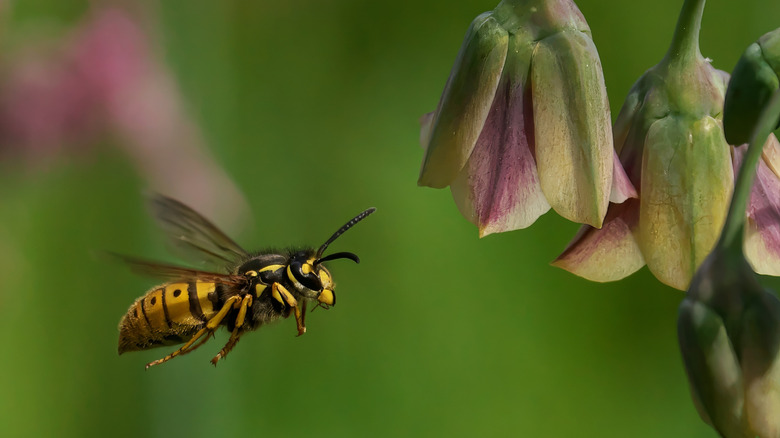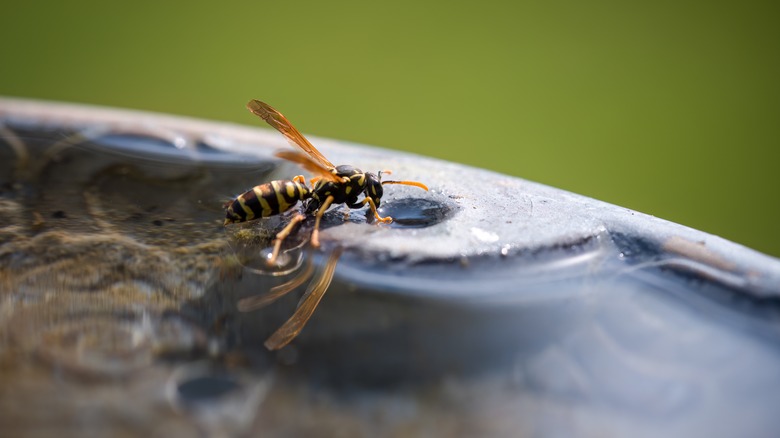The Common Outdoor Feature That's Attracting Wasps To Your Home
You may have read that wasps are important to the natural ecosystem due to both their pollinating and pest control capabilities. In fact, wasps are considered critical to the control of numerous smaller insects, as well as arthropods such as mites and spiders. The majority of wasps are harmless to humans, but it's still reasonable to try to keep your family safe from the species that do sting by making sure they don't hang around your home. This ultimately involves removing or reducing things that are attracting wasps to your yard and garden. It turns out that one commonly overlooked item attracting wasps could be your birdbath.
All creatures need water, and wasps are no exception. As these flying insects search for sources of water, they might be lured to areas of standing water. This is why you might spot them around your birdbath. Not only are wasps more likely to target birdbaths during periods of drought and exceptionally hot weather, but they may also use the water during nesting season as support material. A birdbath alone may not be enough to cause a wasp infestation alone, but it can be yet another item a growing population might target in your outdoor spaces.
How to manage wasps around your birdbath
If you've observed wasps drinking water out of your birdbath, know that this isn't uncommon. While the occasional wasp visiting this water source isn't always a problem in itself, the situation can become dangerous if multiple aggressive species are frequenting the area. Among some of the more concerning species include cicada killers, paper wasps, and yellow jackets. It's impossible to stop wasps from visiting a birdbath altogether, but know that they are unlikely to cause harm when they're trying to drink water. You may also be able to help deter future visits by changing the water frequently, and possibly adding a mister feature.
It's also worth noting that multiple wasp visits to a birdbath usually indicate that the population may be increasing around your home more generally. To that end, you might consider ways to get rid of wasps, as well as steps to control the population. One strategy involves eliminating all sources of standing water in your yard— this may even include temporarily removing your birdbath, but only if the infestation is significant. Also, look for other items that might be attracting wasps and their interest in nesting, including leaf litter piles and open garbage cans. Wasps are also among the downsides of having an outdoor compost bin. The better you can manage wasps around your yard, the less likely they will frequent your birdbath. If the occasional birdbath wasp has turned into a widespread yard infestation, though, you might consider calling a professional pest control expert for help. This is especially the case if you're dealing with stinging wasps around your yard.

